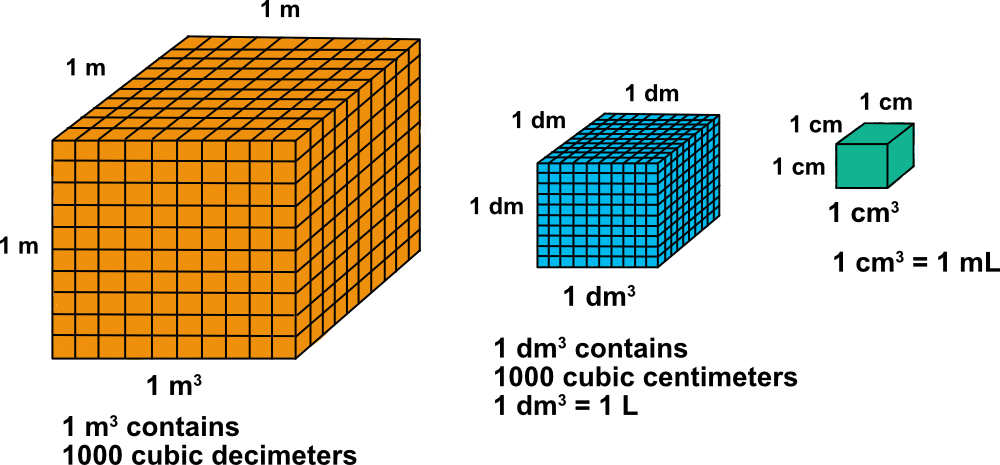The units of measurement typically used in a chemical laboratory involve mass, volume, length, temperature, and time.
Mass
In chemistry, we do not talk in terms of weight, but rather mass, which is the amount of matter contained in an object. In chemistry, mass is usually measured in units of grams (g), milligrams (mg), micrograms (), or kilograms (kg). The weight of an object, which is normally stated in units of ounces and pounds, involves the gravitational force of the earth, moon, or other large body. For example, a person weighing 150 pounds on the earth would only weigh 25 pounds on the moon, because the gravitational force of the moon is only 1/6 of the gravitational force of the earth. Mass, on the other hand, doesn’t take the force of gravity into account. Without any gravity involved, the 150 pound person would have a mass of 68,040 grams. The mass of this person would be the same, whether on earth, the moon, or anywhere else in the universe. In other words, whereas the weight of an object is variable, depending on the amount of gravity, its mass is always constant. In the lab, we use a balance to measure mass which compares the weight of the object to a known reference weight. The SI unit for mass is the kilogram (kg), and it is equivalent to 2.205 lb. In the lab it is more convenient to use grams (g) or milligrams (mg) when measuring mass. Sometimes we need to convert from the English system of units to the metric system. Some common relationships between the English units and metric units for mass are:
1 ounce (oz) = 28.35 grams (g)
1 ton = 2000 pounds (lb) = 907.03 kilograms (kg)
More of these units and their equivalences can be found in your textbook.
Length
The meter (m) is the standard metric and SI unit for length. One meter is equal to 39.37 inches. Other units that are commonly used are the kilometer (km) which is equal to 1000 m, the centimeter (cm) equal to one one-hundredth of a meter, and the millimeter (mm) which is one one-thousandth of a meter. A few of the more common relationships between the English and metric units of length are
1 inch = 0.0254 m = 2.54 cm
Volume
In the United States, we use pints, quarts, gallons, and other units to measure volumes. Volume is a measure of the quantity of space that is occupied by matter. The SI unit for volume is the cubic meter (m3). In chemistry as well as most other countries, the liter, L, is the unit of volume that is used.
Some of the common relationships are
1 gallon (gal) = 3.7856 L
1 fluid ounce (oz) = 0.02957 L
1 cubic meter (m3) = 1000 L = 264.2 gal
1 cubic cm (cm3) = 1 mL = 0.033814 oz.
1 cm3 = 1 cc
Go to Next Topic: Significant Figures
Go Back to Previous Topic: Scientific Notation
Go Back to General Chemistry 1 Study Guides

